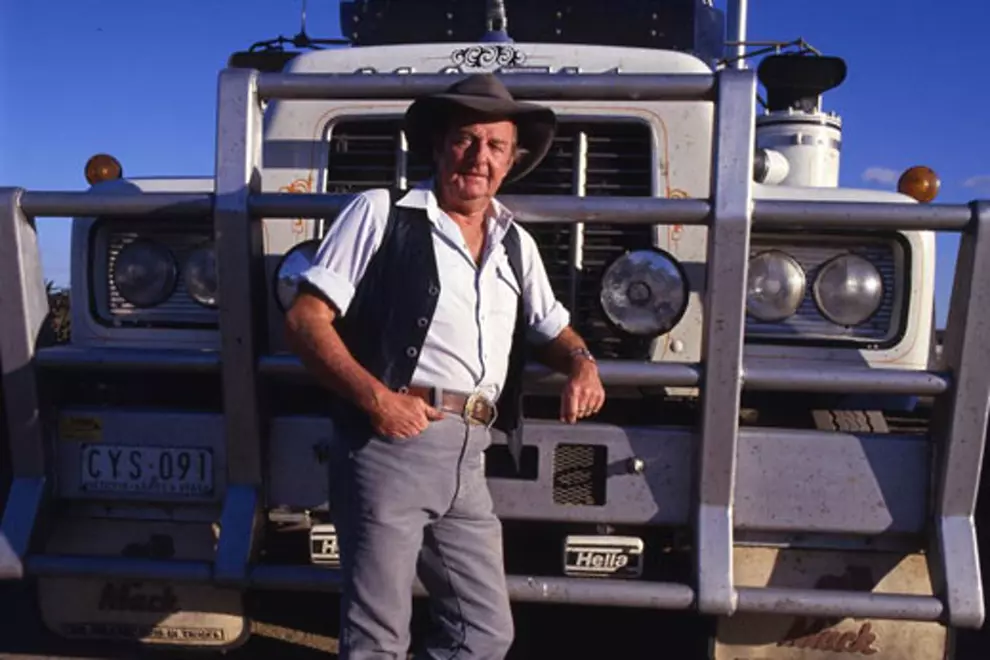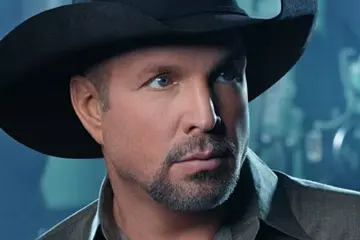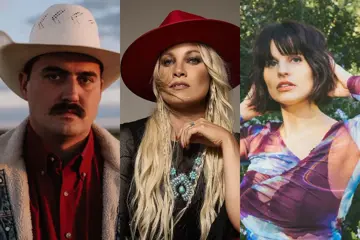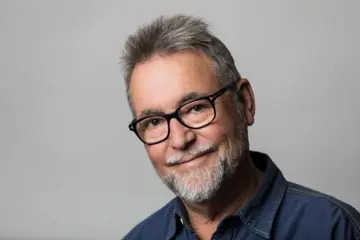I got to have a beer with Slim.
Indeed, every Australian music fan should raise a glass to Slim Dusty, who died 20 years ago today.
Slim shares the anniversary with America’s Gram Parsons, who died 50 years ago. The king of cosmic country was just 26 and had released only one solo album during his lifetime, as well as two records with the Flying Burrito Brothers, one with The Byrds and one with the International Submarine Band.
On the other hand, Slim was working on his 106th album when he died in 2003, aged 76.
“Slim Dusty stands like a colossus on the Australian music landscape,” the authors of The 100 Best Australian Albums said.
The Very Best Of Slim Dusty was featured in the book, at #24, and the authors – John O’Donnell, Toby Creswell and Craig Mathieson – declared: “If this book was about the biggest star or the biggest single figure in Australian music history, Slim Dusty would be #1, no contest.
“Slim didn’t have the best voice, he was not the best writer, he was not the best guitar player. But Slim Dusty was an artist with incredible charisma and vision, and there is no one braver or more pioneering in the history of Australian music.
“His accomplishments place him alongside Don Bradman in Australian folklore.”
Slim was just 10 – and still known by his birth name, David Gordon Kirkpatrick – when he wrote his first song, The Way The Cowboy Dies.
The following year, he adopted the stage name Slim Dusty. “By the time I was 11, I was darn sure that I wasn’t going to be Gordon Kirkpatrick in my glittering future, no way,” he explained.
“Gordon couldn’t do this, Gordon couldn’t do that, and Gordon wasn’t allowed to do or say this or that. But, by hell, someone like a Slim Dusty, for instance, could and would do all the wonderful things I had in mind.
“That’s how Slim Dusty was born.”
Join our community with our FREE weekly newsletter
But the Slim Dusty story was no one-man show. When his career was commencing, the McKean Sisters – Joy and Heather – were a popular country duo. “I wasn’t all that keen on Joy at first,” Slim later admitted. “And she wasn’t over-excited about having me around all the time, either. I thought she was stuck up, and she thought I was conceited. We were both wrong.”
Joy didn’t even know Slim’s real name before they got engaged. Married in 1951, they became one of the greatest partnerships in Australian music. “We were just young people, fell in love, loved what we were doing, and it turned into a lifetime,” said Joy, who died in May this year, aged 93.
Joy was responsible for writing many of Slim’s hits. “We knew each other just so well; I could express many things for Slim that even he could not express for himself.”
On her 2014 album Oz, Missy Higgins recorded The Biggest Disappointment, which Joy had written for Slim.
“The country music industry owes a lot to Slim Dusty,” Missy said. “Before Slim, there was little to no country down under which wasn’t a direct copy of American country – or at least none of it was getting played on the radio.
“It must have been so great for all those farmers, those outback pub owners, and for cultural morale in general, to hear their own accents for the first time on the radio, telling their stories.”
“All these people out in the bush, you’d almost think they were waiting for Slim, someone like Slim to come along,” Joy believed. “He did become a voice for them.”
Slim was also loved by Indigenous communities. “Slim crossed all racial divides with music; he pulled a lot of people together,” Troy Cassar-Daley says.
One of Slim’s favourite tours was with Yothu Yindi. At Slim’s funeral, Yothu Yindi’s lead singer, Dr Yunupingu, called the singer “the first pioneer of reconciliation between black and white Australia. Your songs bring harmony and balance between people and the land.”
Slim also inspired many young country musicians, including our biggest country export. In the 1996 book Another Day, Another Town, Slim wrote about taking “a way-out young artist, Keith Urban, on tour with me”.
When he was 11, Keith got Slim to sign his sheet music of Lights On The Hill, a song they later recorded together. Keith called the song “bulletproof”, while Paul Kelly hailed it as “really beautiful and interesting – the music and the lyrics are at odds, and I love that kind of writing”.
“When you listen to Slim or Joy songs, you feel like you’re there with ’em,” Kasey Chambers said in the 2020 documentary Slim & I.
“You feel like you’re part of the family,” her dad, Bill, added.
“Look at what they created,” Kasey continued. “That is the dream. And it certainly inspired us to pack up the family and head out on the road and make music our life.”
Bill Chambers was working in a fish shop when he pitched a song, Things Are Not The Same On The Land, to Slim. He says it was “the best day of my life” when the singer called to say he was going to record the song.
When he was 19, Slim Dusty signed to a label called Regal Zonophone, which later became EMI. Slim is revered at EMI, and rightly so. He has sold more albums in Australia – more than seven million – than any other local act.
Slim was the first artist in the world to record 100 albums with the same label.
Don Walker wrote the title track of his 100th album, Looking Forward Looking Back.
Remarkably, Slim was also the first singer in the world to have his voice beamed down from space – Slim’s version of Waltzing Matilda was broadcast to Earth from the Space Shuttle Columbia’s first mission in 1981. “That must have been the biggest audience I’ve ever had,” he said.
Slim made Waltzing Matilda his own, performing it at the AFL Grand Final and the closing ceremony of the Sydney Olympics.
Slim – who was part of the ARIA Hall of Fame’s first induction (alongside Johnny O’Keefe, Col Joye, AC/DC, Dame Joan Sutherland and Vanda & Young) – was the first Australian artist to receive a gold record and the first to have a chart hit overseas.
When he released his breakthrough smash, A Pub With No Beer, in 1958, “nobody was playing country”, Joy remembers.
It became the first Australian song to top the charts and our first international hit, reaching #3 in the UK at the start of 1959.
“It just went berserk,” Joy recalled. “It brought him into every household through Australia.”
A Pub With No Beer is worthy of its own book. It’s a tale of two pubs in two states, two writers and no beer.
Two venues claim the song is about them: The Pub With No Beer in Taylors Arm in NSW and Lees Hotel in Ingham, Queensland.
In 1943, a cane farmer and part-time poet, Dan Sheahan, went to the Ingham pub (then known as the Day Dawn Hotel) for a cold beer. But the publican, Gladys Harvey, told him there was no beer – American soldiers had drunk the place dry the night before. Dan wrote a poem called “Pub With No Beer”, which was published in the North Queensland Register on January 1, 1944.
Twelve years later, timber-cutter and songwriter Gordon Parsons dropped into his local at Taylors Arm (then known as the Cosmopolitan Hotel), about 500km north of Sydney. He was given Sheahan’s poem, which he adapted, writing about some of the characters at the Taylors Arm pub.
Slim and Joy were about to head out on tour, but one more song was needed to complete a recording session, so Slim asked Gordon – who’d been best man at his wedding – if he could do A Pub With No Beer.
Belgian singer Bobbejaan Schoepen did a Dutch version in 1959 (Café Zonder Bier) and a German version in 1960 (Ich steh an der Bar und ich habe kein Geld).
A Pub With No Beer has also been covered by Johnny Cash and The Dubliners. And Midnight Oil did it for the Slim Dusty tribute album, Not So Dusty, in 1998.
Twenty-two years after his first chart-topper, Slim scored another #1 pop hit with another drinking song, the classic ode to mateship Duncan.
Slim even did the song live on Countdown, adding a new line: “I’d love to have a beer with Molly.”
And then I got to have a beer with Slim, not long after I’d read his autobiography, Another Day, Another Town.
“Why me?” Slim pondered in the book. “I keep asking myself that question, and I shake my head. Why did my dream come true when so many other people worked and tried just as hard, and it didn’t happen for them?”
When I met Slim in 1996, I immediately understood his enduring career. It was the end of a long day of interviews at EMI’s Melbourne office, and Slim had worked up a sweat talking about his new live album 91 Over 50.
At first, it was a little off-putting seeing Slim without his hat on his head. Along with Molly Meldrum, this was the most famous hat in Australian music. But chatting with Slim was like catching up with an old mate.
“I think I’m going to have a beer,” he announced. “Would you like one, Jeff?”
So, I got to have a VB with Slim.
The title of his live collection referred to the fact it was his 91st album during his 50-year career.
That statistic blew my mind. “Ninety-one albums,” I pondered out loud. “Could you name ’em all, Slim?”
“Not a chance,” he laughed.
He proudly told me that 50 years on the one label was a world record, and the worldwide boss of EMI had told him that if they recorded one of his songs every day, it would take more than three years to complete the entire catalogue. “And I’ve got a few more songs left in me,” Slim smiled.
He was working on his 106th album when he died at home in St Ives after a battle with lung and kidney cancer.
On the 20th anniversary of his death, it remains apparent there is no more “Australian” artist than Slim Dusty.
“Slim Dusty blazed the red-dirt trail for Australian singer-songwriters,” Missy Higgins observes, “allowing us to remain unashamedly ourselves.”
“We felt like he was singing about us,” Troy Cassar-Daley adds.
The Bushwackers’ Dobe Newton explains that Australian country singers were imitating American hillbilly music before Slim. “It wasn’t until Slim came along that an actual Australianness entered into what we called country music.”
As Peter Garrett remarked at Slim’s funeral, “Slim was that rarest of performers whose gift was to yarn to everyone in song.
“He was having a conversation in an Australian accent.”
















